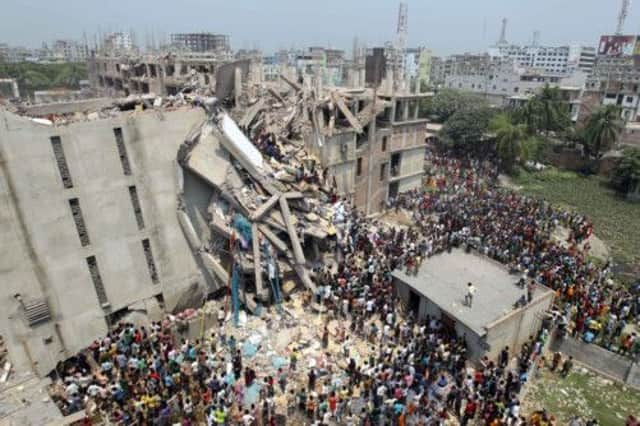Inspectors shut down Bangladesh’s factories


A separate inspection by the garment industry of 200 factories found that 10 per cent of them were so dangerous they were ordered to shut.
Textiles minister Abdul Latif Siddique said a third inspection, conducted by the government, could show that up to 300 factories were unsafe.
Advertisement
Hide AdAdvertisement
Hide AdThe findings offer the first look at how unsafe working conditions are for the workers who produce clothing for western brands.
The findings are also more bad news for the industry, worth billions of pounds, that has been struggling to regain confidence following the April collapse of the Rana Plaza building that killed 1,129 people.
The inspections could signal the industry is finally taking workers’ safety seriously.
After the Rana Plaza collapse, the government and garment manufacturers asked the Bangladesh University of Engineering and Technology to begin evaluating the buildings. The university formed 15 teams of two engineers each – a structural expert and a foundation expert – to conduct initial inspections.
Further tests will be completed in the coming months.
The initial results from 200 buildings show some had problems so serious that engineers recommended they were immediately shut down. Others were told to seal off the illegal floors at the top of their buildings and remove the heavy equipment stored there.
“There were buildings that we found that were really critical and we asked them to immediately vacate those buildings,” said Mujibur Rahman, head of the university’s department of civil engineering.
The engineers found that many of the factories were in commercial or residential buildings not designed to withstand the vibrations and heavy loads of industrial use.
Most of the buildings did not have structural tests done, and it was “very rare” that an engineer supervised construction, Mr Rahman said.
Advertisement
Hide AdAdvertisement
Hide AdThe teams found a building approved for only six stories that had been expanded to ten.
In one report, the engineers found structural cracks on two columns and a heavy power generator located on the roof, which posed a threat to stability.
Industry and government officials said they were taking the results seriously and have announced a steady stream of factory closures in recent weeks.
“We are very much taking care of this thing, because we know that for one or two buildings, we cannot destroy all the industry,” said a member of the garment manufacturers’ group.
Mr Siddique said the government was conducting its own inspections and also expects to close factories.
Mubasshar Hussain, president of the Institute of Architects, Bangladesh, said 50 per cent of the factories are likely to have problems, but all of them can be addressed within a year with a co-ordinated campaign.